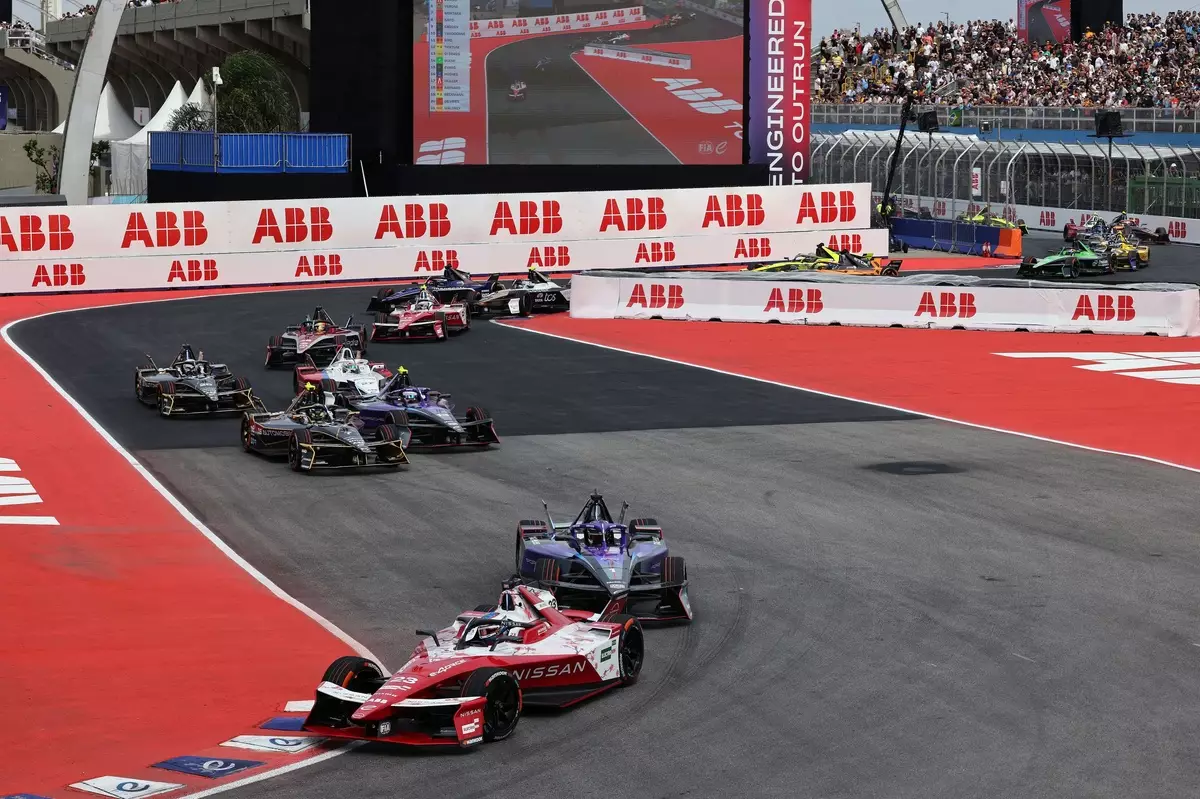The world of Formula E is renowned for its exhilarating high-speed action and complex strategies, with drivers needing not only skill but also unwavering precision, particularly in managing their energy and optimizing their performance on the track. The recent São Paulo E-Prix illuminated the precarious balance between aggressive racing and strategic conservation, a lesson that Nissan driver Oliver Rowland tragically learned the hard way. Rowland’s journey in this race serves as a poignant reminder of how fleeting opportunities can be in motorsport, with myriad factors contributing to the outcomes.
Oliver Rowland entered the inaugural race of the 2024-25 season with high hopes, having qualified in a competitive second place, a mere 0.099s behind reigning champion Pascal Wehrlein. The expectation was palpable; Rowland had both the talent and the car to challenge for victory. Off the start, he displayed impressive reflexes and a keen understanding of the track, overtaking Wehrlein to assume the lead early on. For the first segment of the race, it appeared as though Rowland and his Nissan team were on track to achieve a promising outcome, having established a three-second gap over the competing pack after engaging with the all-wheel-drive Attack Mode.
However, motorsport is notoriously unpredictable, and as every seasoned fan knows, missteps can swiftly derail the most meticulously crafted plans. Rowland’s lead began to slip when he faced penalties and miscalculations—a cascade of errors that culminated in a disappointing 14th-place finish.
The Impact of Penalties and Strategic Errors
Rowland’s remarkable early pace came to a grinding halt after being slapped with a drive-through penalty for ‚overpower‘, a term that denotes exceeding permissible power levels laid out by race regulations. This penalty not only dashed his hopes but also serves as an important case study on the critical nature of compliance with technical regulations in Formula E. Rowland’s admission that he had encountered “more than one f**k up” conveys the emotional weight of the moment, emphasizing the cascading nature of errors that can arise during a complex race situation.
The core of Rowland’s regret stemmed from a lack of accurate lap count information. Such miscommunications can severely hamper a driver’s race strategy, and in Rowland’s scenario, it indeed did. He acknowledged that had he been equipped with the correct lap data, he would have managed his energy much more effectively, and potentially contested for the win. This moment highlights an often-overlooked aspect of racing: communication is as crucial as driving skill. In fast-paced environments like Formula E, inaccurate data can lead even the most strategically adept drivers into a quagmire.
As the race unfolded, two red flags resulted in significant challenges for Rowland. The second red flag, for example, neutralized the lead he had somewhat painstakingly established. This situation can easily lead to a sense of stalled momentum for drivers like Rowland, whose pit strategy and energy management were greatly affected. He articulated that, during the initial red flag, he felt he was in a favorable position with adequate energy reserves, which quickly evaporated as the frame of the race shifted unpredictably.
Learning to adapt to such fluctuations is imperative for all Formula E drivers. The energy conservation strategies that proved effective earlier in the race quickly became moot under the subsequent race conditions.
Rowland’s reflections on the São Paulo E-Prix provide a crucial lesson for both drivers and teams alike: the importance of maintaining composure and adaptability while navigating the unpredictable nature of racing. The correlation between effective communication, energy management, and compliance with race regulations cannot be overstated. Looking ahead, Rowland’s experience serves as a cautionary tale that should encourage teams to bolster their pre-race planning and communication frameworks.
As the season progresses, Rowland and his Nissan team have an opportunity to learn from this setback. Harnessing the insights gleaned from São Paulo, they can better position themselves for subsequent races, minimizing avoidable errors and maximizing their potential for success on the racetrack. For Rowland, the quest for redemption is only just beginning, underscoring the resilience and tenacity needed to thrive in the high-octane world of Formula E.


Napsat komentář